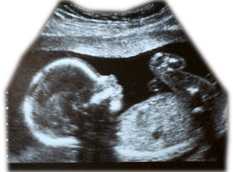4.1 Pregnancy and breastfeeding
 Benzodiazepines have been widely used during pregnancy. They cross the placenta but the evidence is not consistent on their association with teratogenicity or infant development when used at therapeutic doses during early pregnancy; any risk of such effects appears small.
Benzodiazepines have been widely used during pregnancy. They cross the placenta but the evidence is not consistent on their association with teratogenicity or infant development when used at therapeutic doses during early pregnancy; any risk of such effects appears small.
Use of a benzodiazepine late in pregnancy or at term may expose the neonate to their pharmacological effects, such as hypothermia (and impaired metabolic response to cold stress), disturbance in heart rate, hypotonia, impaired suckling, and some respiratory depression—‘floppy infant’ syndrome; these effects may lower the Apgar score1.
Infants born to women who have taken a benzodiazepine over a prolonged period during the latter stages of pregnancy are at risk of developing physical dependence and suffer withdrawal symptoms including irritability and tremors; withdrawal effects may not be apparent for several days after birth and they may persist for weeks or even months.
Benzodiazepines are present in breast milk; they could possibly have short-term and long-term effects on CNS function in the infant.
Factors which increase risk
Higher dose and longer duration of use of a benzodiazepine during pregnancy or breastfeeding increase the risk of adverse effects in the neonate.
The risk of withdrawal symptoms in the neonate is likely to be higher with the use of short-acting benzodiazepines in the latter stages of pregnancy.
Risk-reduction measure
A woman of childbearing potential taking a benzodiazepine should be advised to contact her physician to discuss the possibility of discontinuing the benzodiazepine if she intends to conceive or suspects she might be pregnant.
A neonate born to a mother taking benzodiazepines should be observed for sleeping habits, temperature stability, weight changes and changes in clinical status; the possibility of delayed withdrawal symptoms should be borne in mind.
Treatment
Initial treatment of the neonate suffering from adverse effects of benzodiazepines should be supportive; nutritional support may be necessary if the neonate is failing to thrive. Ideally, pharmacological intervention to manage symptoms should be avoided but should be considered if the neonate has seizures or other serious complications.
Severe features of benzodiazepine withdrawal in the neonate may call for treatment with a long-acting benzodiazepine, with the dose tapered down gradually. Selection of the drug and dose should take into account limited neonatal capacity for metabolism. Care is needed to prevent exposing the neonate to certain excipients2 (eg benzyl alcohol and propylene glycol) in benzodiazepine formulations.
The following sources may be consulted for further information on the use of benzodiazepines during pregnancy and breastfeeding:
- UK Teratology Information Service (External link - Accessed 28 February 2013) telephone 0844 892 0909
- Medicines Information Service specialist advice on drugs in lactation (External link - Accessed 28 February 2013) telephone 0121 424 7298 (Birmingham) or 0116 255 5779 (Leicester)
- The result of Apgar test on a newborn 1 minute after birth and again 5 minutes after birth. The test evaluates skin coloration (appearance), heart rate (pulse), reflex irritability (grimace response), activity and muscle tone, and breathing rate and effort (respiration). Each of the five observations is scored on a scale of 0 to 2, with 2 being the best score.↩
- A usually inert substance used in the formulation of a medicine↩